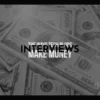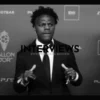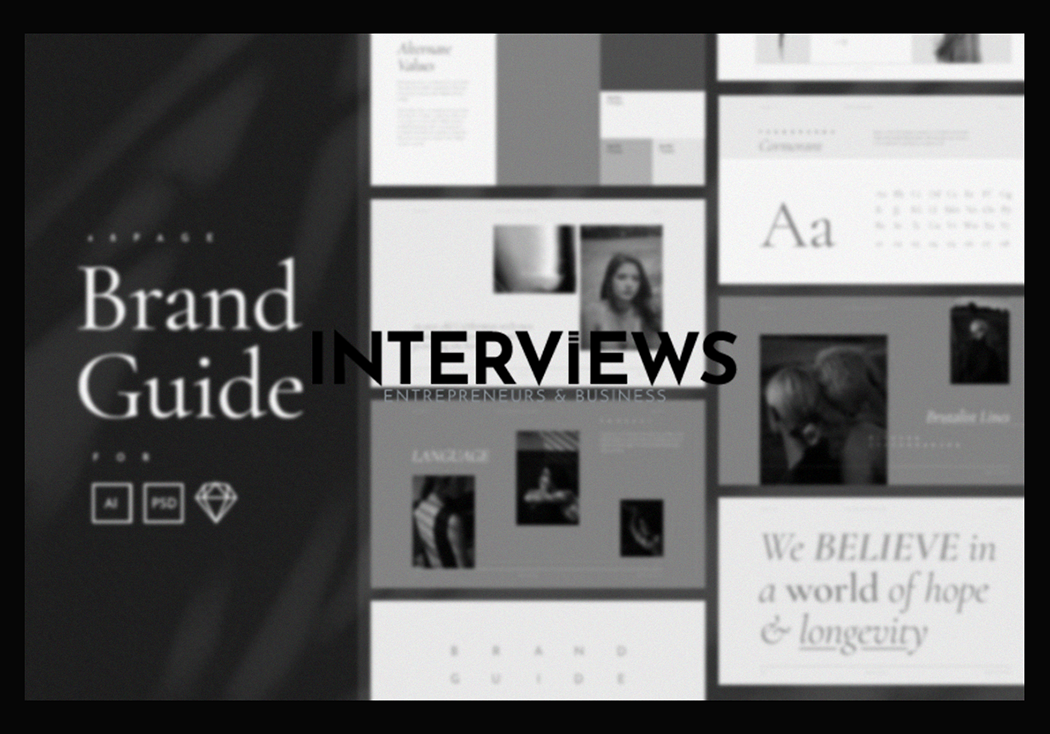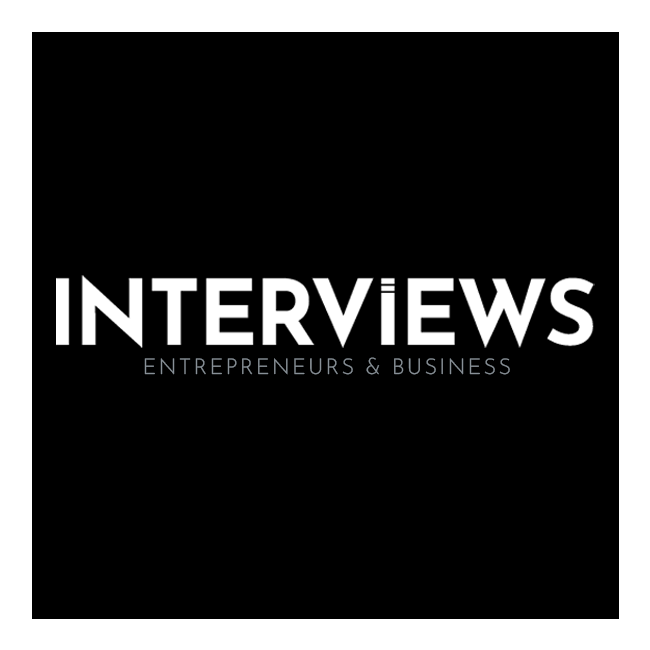So, You Want to Be a Fashion Mogul? Buckle Up, Buttercup.
Starting a fashion brand? Glamorous? Think again. It’s less red carpets and more red tape. But who are we to crush your sartorial dreams? Let’s break down how to launch a clothing line without ending up in a bargain bin.
First Things First: Lay the Groundwork
You wouldn’t build a skyscraper on a shaky foundation. Same for fashion. Market research is your hard hat and blueprints. Understand your competition. Know their strengths and where they fail. “Fashion Entrepreneurship: Key Steps to Building a Successful Brand” is your homework.
Next, the dreaded business plan. Yes, it sounds about as thrilling as watching paint dry. But trust us. It is your roadmap from ramen noodles to runway shows. “Develop a Proper Business Plan” – these words are your financial and operational life raft.
Who are you designing for? Yourself? Unless you plan to be a fashion hermit, probably not. “Identify Your Prospective Buyers.” Are they Gen Z eco-warriors or Baby Boomer brunch enthusiasts? Knowing your audience is key for a good fit.
Let’s get to the fun part. “Start Designing Your Outfits.” Your vision comes to life here. Sketch, drape, mood board until your creative cup overflows. Just remember, even avant-garde needs to be wearable (by someone other than Lady Gaga).
Now for the not-so-fun, but crucial part: finding someone to make these masterpieces. “Search for a Manufacturer.” This is like dating, but with factories. You want a reliable partner who understands your vibe and doesn’t cost a fortune.
No one will buy your stuff if they don’t know it exists. “Start Marketing Your Business.” Social media is your best friend, but don’t forget the power of good hustle. Get your brand out there; make some noise. Subtle whispers won’t cut it in the fashion jungle.
“Work on the Branding Aspects.” Your brand is more than just a logo; it’s your personality, your ethos, your soul (brands have souls now). Nail down your visual identity, voice, and vibe. Are you edgy and rebellious or chic and timeless? Make it consistent.
Finally, the moment of truth. Sales are rolling in (hopefully). “Monitor Your Sales and Plan for the Next Lot.” Don’t just sit back counting your potential millions. Analyze what’s selling and what’s flopping. Fashion is fast-moving; you need to keep pace.
Money, Money, Money: The Cost of Fashion Dreams
Let’s talk dollars and cents. Starting a fashion brand isn’t free. “Cost of Starting a Fashion Brand” haunts many budding designers. Prepare yourself because reality bites (but stylishly).
Initial Investment & Startup Costs:
- Small-Scale Online Store: $5,800-$17,000. The “dipping your toes in” option. “Small-Scale Online Store: $5,800-$17,000” is the range for launching an e-commerce operation. Not cheap, but manageable.
- Small-Scale Retail Outlet: $64,500-$131,300. Want a physical store? “Small-Scale Retail Outlet: $64,500-$131,300.” That online store looks like a bargain now. Bricks and mortar are expensive.
- Print-on-Demand (POD) Model: Lower upfront costs. “Print-on-Demand (POD) Model: Lower upfront costs, pay for printing and shipping after a sale.” Genius for budget-conscious folks. No inventory headaches, just designs and demand.
- Wholesale Clothing: Purchase pre-made garments. “Wholesale Clothing: Purchase pre-made garments and resell.” Less creative control but quicker to market. Think of it as fashion flipping.
- White-Label Manufacturing: Supplier customizes pre-made garments. “White-Label Manufacturing: Supplier uses pre-made garments and customizes them.” Allows for brand flair without full-scale production hassles.
- Bespoke Manufacturing: Custom tailored pieces. “Bespoke Manufacturing: Custom pieces tailored to your specifications.” High-end, high-cost, high-control. For detail-obsessed fashionistas.
Key Cost Areas – Where Does the Dough Go?
- Product Development: The creative crucible.
- Design & Pattern Making: $300 – $8,000 per style. “Design & Pattern Making: $300 – $8,000 per style.” Good design isn’t cheap. Pattern making? Consider it fashion engineering.
- Materials & Samples: Fabric, zippers, buttons, etc. “Materials & Samples: Fabric, zippers, buttons, etc.” Fabrics and trims add up faster than you think.
- Grading & Marking: Preparing patterns for different sizes. “Grading & Marking: Preparing patterns for different sizes.” Making sure your size range actually ranges.
- Prototyping: Ensuring fit and quality. “Prototyping: Ensuring fit and quality before mass production.” Don’t skip this. A bad fit kills brands.
- Manufacturing & Production: Making it real.
- Fabric & Trims: Cost of materials. “Fabric & Trims: Cost of materials.” Yes, materials again. They are crucial.
- Labor Costs: Outsourcing vs. own production. “Labor Costs: Depending on whether you outsource or have your own.” Ethical production is in; choose wisely.
- Shipping & Transportation: Moving materials and finished goods. “Shipping & Transportation: Costs related to moving materials and finished goods.” From factory to warehouse to customer – it’s a logistical ballet with a price tag.
- Marketing & Branding: Shouting from the rooftops (digitally, mostly).
- Website & E-commerce Platform: Shopify, etc. “Website & E-commerce Platform: Shopify, etc.” Your online storefront. Pick your platform.
- Advertising & Promotion: Social media, print ads. “Advertising & Promotion: Social media, print ads.” Getting seen costs money. Social media ads, influencer collabs, even print ads if you’re feeling retro.
- Branding & Logo Design: “Branding & Logo Design:” Your visual handshake with the world. Worth investing in professional help unless you’re a design whiz.
- Inventory & Warehousing: Where clothes hang before they go home.
- Storage Space: Costs for storing inventory. “Storage Space: Costs for storing inventory.” Your garage might work initially, but you’ll need real storage eventually.
- Inventory Management: Software and resources for tracking stock. “Inventory Management: Software and resources for tracking stock.” Don’t guess; track. Inventory software is your friend.
- Legal & Business Costs: The grown-up stuff.
- Business Registration: Fees. “Business Registration: Fees for registering your business.” Making it official comes with paperwork and fees.
- Legal Advice: Costs for legal counsel. “Legal Advice: Costs for legal counsel.” Protect your brand and contracts. Lawyers are expensive for a reason.
Ongoing Costs – The Never-Ending Story
- Payment Processing: Online transaction fees. “Payment Processing: Fees for handling online transactions.” Every sale has a little fee attached. It adds up.
- Customer Service: Staff or software. “Customer Service: Costs for customer inquiries.” Happy customers = repeat business. Good service is key.
- Marketing & Advertising: Ongoing promotion. “Marketing & Advertising: Ongoing costs to promote your brand.” Fashion is fickle; you can’t stop marketing.
Cost Variation: $100 to $10,000 (or more) depending on approach. “Starting a clothing line can cost anywhere from $100 to several thousand dollars.” The answer to “how much does it cost to start?” ranges from $500 to $10,000. Your approach dictates expenses. Choose wisely (and realistically).
LLC? Or Not LLC? That is the Question.
“LLC (Limited Liability Company) Considerations.” Legal jargon alert! This is about protecting personal assets from business woes.
Benefits of an LLC – The Perks
- Liability Protection: Shielding assets. “As a sole proprietor or partnership, you are personally liable for debts and lawsuits. An LLC shields your assets (like home and savings) from liabilities.” If business tanks or gets sued, your piggy bank is mostly safe.
- Professionalism and Credibility. “An LLC makes your business appear more professional and credible to customers, suppliers, and potential investors.” Sounds fancier, feels fancier; might even get you taken more seriously.
- Separation of Finances.“An LLC helps you keep personal and business finances separate for easier tracking
- Expenses help manage your finances.” Essential for sanity. Keep personal and business finances separate.
- Tax Advantages. “An LLC offers tax benefits depending on your business structure.” Always consult a tax professional for specifics.
- Ease of Operations. “An LLC simplifies operations.” Opening a business bank account and securing loans becomes easier.
When an LLC Might Not Be Necessary – The “Maybe Later” Scenarios
- Small, Low-Risk Businesses. “If your clothing brand is small and low-risk, consider starting as a sole proprietorship or partnership.” Form an LLC later if growth demands it.
- Initial Stages. “You can start without an LLC.” Once understanding of risks improves, consider forming one.
Steps to Form an LLC – The How-To
- Choose a Business Name. “Select a unique name for your LLC.” Ensure availability in your state.
- Register Your Business. “File necessary paperwork with your state’s Secretary of State.” The usual fun stuff.
- Obtain an EIN. “Get an Employer Identification Number from the IRS.” It’s like your business’s social security number.
- Create an Operating Agreement. “This outlines rules for your LLC.” Good for partnerships.
- Open a Business Bank Account. “Separate personal and business finances.” Do it now.
Is This Thing Even Going to Work? Viability and Profitability
“Viability and Profitability.” The million-dollar question for many. Let’s get real.
Difficulty: Requires creativity and business acumen. “Starting a clothing line needs creativity and business skills.” You need to merge fashion and commerce.
Starting with No Money: Possible through smart strategies. “Begin with low-cost strategies like dropshipping.” Build an online presence instead of relying on inventory.
Most Profitable Clothing Businesses – Where’s the Gold?
- High-End Boutiques & Branded Stores. “These often lead to higher profits.” Luxury margins can be lucrative.
- Reselling Vintage/Second-Hand Clothing. “Profitable avenues include vintage clothing.” Sustainable and stylish can yield profit.
- Niche Categories (e.g., chef jackets). “Niche categories do well.” Fill specific needs effectively.
- Custom Print-on-Demand. “Personalization can attract customers.” Let them design within your brand’s aesthetic.
Launch Time: Making it Happen
“Launching a Clothing Line.” This is the big moment. Let’s outline the ingredients for success.
Key Elements for Launch Success
- Strong Brand Identity. “You need a strong brand identity.” Branding matters.
- Solid Business Plan. “A solid business plan is crucial.” Still think it’s boring? Think again!
- Well-Executed Marketing Strategy. “Your marketing strategy should be well-executed.” Even fantastic designs won’t sell themselves!
Process Breakdown – Step-by-Step to Launch
- Develop Your Brand and Business Plan. Start with your foundation.
- Define your brand and USP. “What is your unique selling proposition?” Define your differentiation.
- Create a business plan. “Outline your financial projections and marketing strategy.” It’s important.
- Choose a business structure. “Decide if you will be a sole proprietorship or LLC.” Revisit this decision as needed.
- Determine your budget. “Factor in costs for design, marketing, and production.” Plan wisely. Don’t spend unwisely.
- Design and Production. Move from concept to creation.
- Develop your clothing line. “Create a unique collection that aligns with your brand.” Make it cohesive and compelling.
- Source fabrics and materials. “Choose quality materials that fit your target audience.” Be ethical in sourcing.
- Find a production partner. “Decide to outsource or keep production in-house.” It depends on various factors.
- Set up production and manufacturing. “Get the necessary resources for production right.” Logistics matter. Get this right to avoid halts.
- Marketing and Sales. It’s time to get those clothes out.
- Create a website. “Build an online store for your clothing line.” Make it visually appealing and user-friendly.
- Develop a marketing plan. “Utilize social media and email marketing.” A multi-channel approach works best.
- Consider retail partnerships. “Explore selling in physical stores.” Expand reach beyond online only.
- Build a strong online presence. “Engage with your audience and create quality content.” Aim to build a community around your brand.
- Set your pricing strategy. “Determine pricing based on costs and competition.” It’s both an art and a science.
The Nitty-Gritty Numbers: Financial Aspects
“Financial Aspects.” Let’s explore the money side further, shall we?
Savings Needed: Online line ($5,800-$17,000) / Retail line ($64,500-$131,300). “Starting an online clothing line costs between $5,800-$17,000.” A retail business ranges from $64,500-$131,300. Set savings goals accordingly.
Earning Potential: Depends on smarts and market fit. “Well-managed clothing lines meet target market needs.” Monetizing involves pricing correctly, marketing effectively, and managing operations efficiently. No magic formula here!
Brand Owner Income: Expect a range, not a guarantee. “Average annual income varies between $30,000 and $120,000.” Some earn millions; many earn far less. Manage those expectations carefully!
Protecting Your Precious Brand: Branding and Legal Stuff
“Branding and Legal Protection.” Don’t skip this unless legal headaches appeal to you!
Creating a Brand Style: Visual identity guidelines. “Design a logo and create guidelines for how it should be used.” Maintain consistency across all branding elements.
Registering a Brand Name: USPTO ahoy! “Apply to the U.S. Patent and Trademark Office to register.” This prevents brand theft! Get that legal shield.
Need to Copyright? Yes, to protect your name.“Yes, you need registration for your clothing brand name.” Protection is invaluable.
No one can take it from you. Trademark is more accurate than copyright for brand names. Protect your intellectual property.
Trademark Cost: Starts at $350 per class. A trademark application with the USPTO starts at $350 per class online. Trademarking isn’t free. Think of it as an investment in your brand’s future. Plan for “$350 per class” in your budget.
Day-to-Day Realities: Operational Considerations
“Operational Considerations” include the vital, yet less glamorous aspects of running a fashion biz.
Selling without an LLC: Possible, but… You don’t need a formal business to sell online. Still, forming an LLC offers many benefits. Yes, you can sell online without one. However, consider LLC benefits like liability protection and professionalism.
Writing off expenses (clothes, car, phone): Business use only! Clothes are business expenses only if they can’t be used outside of business. Your LLC can pay for phones if used for business. You can write off a car purchase if used for business. Business use only means just that. Avoid writing off your entire wardrobe unless your brand is specific.
Failure Rates: Brace yourself, it’s high. Research shows about 80% of new fashion brands fail within five years. That is typical for various industries. The fashion industry is tough. “Failure Rates: High, around 80%.” This is your reality check.
Fabric Fundamentals: Sourcing Smart
“Sourcing Fabric.” Clothes don’t just appear. Smart fabric sourcing is key.
Understanding Fabric Needs. “1. Learn fabric construction basics.” Know your fabrics: cotton, silk, polyester, and blends. Each has unique properties and price points. Start your education on fabric needs today.
Researching Suppliers: Online, Expos, Mills, Agents. Start searching for fabric suppliers online. Trade expos are great for finding cloth. Mills provide fabrics directly. Agents act as middlemen for textiles and companies. Use online directories, trade shows, and sourcing agents to broaden your options.
Evaluating Suppliers: Quality, Sustainability, Pricing. Evaluate fabric quality closely. Juggle quality control, ethical practices, and pricing when picking suppliers. Don’t sacrifice quality for a better price – it could harm your brand.
Developing a Fabric Sourcing Plan. Create your fabric sourcing plan to help manufacturers outline their fabric needs. Plan ahead to avoid running out of fabric. This proactive planning saves headaches later.
Online Domination: Selling Clothes Online
“Selling Clothes Online.” E-commerce is your path to reach many customers.
- Finding a Niche. “Find Your Niche.” In a crowded market, specializing helps you stand out.
- Deciding What to Sell. “Decide What to Sell.” What specific items will you offer? T-shirts? Dresses? Cat sweaters? Choose carefully.
- Choosing a Business Model. “Choose a Business Model.” Consider dropshipping, print-on-demand, wholesale, or bespoke. Pick what fits your budget and goals.
- Planning Your Supply Chain. “Plan Your Supply Chain.” Map every step from fabric to delivery. Efficiency is key.
- Creating Your Store. “Create Your Store.” Develop a website and e-commerce platform. Focus on product photography and user experience.
- Getting Social. “Get Social.” Use social media to market, influence outreach, and create engaging content.
- Implementing Marketing and SEO Strategies. “Implement Marketing and SEO Strategies.” Focus on SEO, ads, email marketing, and content marketing for greater online visibility.
- Bookkeeping. “Don’t Forget About Bookkeeping.” Numbers, spreadsheets, and taxes are vital. Keep up with bookkeeping to avoid surprises on tax day.
Extra Nuggets of Wisdom: Additional Tips and Information
“Additional Tips and Information.” Here’s more insight for your fashion startup.
Most In-Demand Clothing: (trends are fickle). “Stripes. Bell-Sleeve Tops. Backpacks. Tropical Prints.” Trends change swiftly. “Most In-Demand Clothing: (trends vary)” – stay updated without chasing every brief fad. Build a lasting brand through current styles.
Can sell on Amazon? Yes. “To sell on Amazon, sign up by selecting a selling plan and enrolling in Brand Registry.” Amazon is a massive market. “Can sell on Amazon: Yes” – consider it but don’t rely solely on it. Strengthening your brand presence is essential.
Starting with No Experience: Doable, with hustle. “Starting a clothing brand is possible by building a strong brand identity and solid business plan using online resources.” You don’t need a fashion degree; passion, research, and creativity can take you far.
Turning a name into a Brand: Brand alchemy. “To turn your name into a brand, focus on your value proposition, build online visibility, communicate consistently, and consider trademark registration.” Just a name until infused with meaning and experience. “Turning a name into a Brand” takes time.
This is it – the raw guide to starting a fashion brand. It takes work and risk. It’s a rollercoaster ride. If it were easy, everyone would do it. Go forward and conquer fashion – begin with a solid business plan first.





